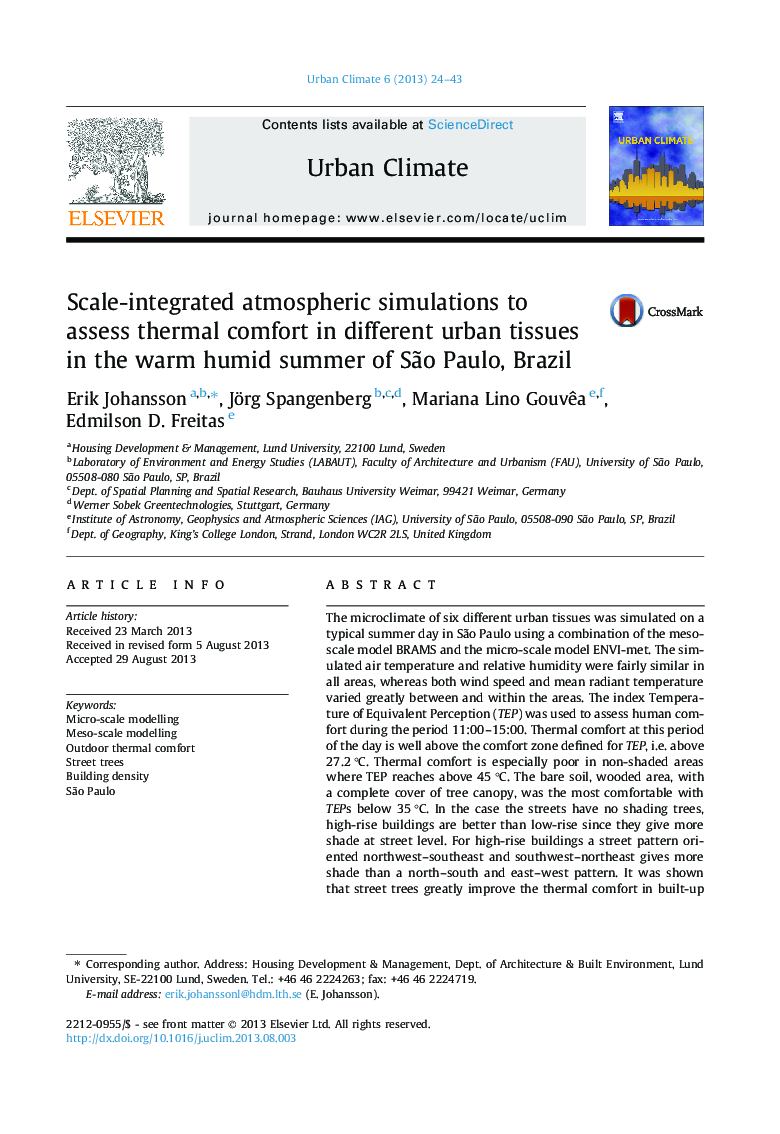| Article ID | Journal | Published Year | Pages | File Type |
|---|---|---|---|---|
| 143795 | Urban Climate | 2013 | 20 Pages |
•Around noon in summer, thermal conditions are well above the comfort zone.•The heat stress is especially strong in non-shaded areas exposed to solar radiation.•High-rise buildings give more shade at street level and less heat stress than low-rise.•Street trees with medium dense canopy greatly reduces heat stress in the streets.
The microclimate of six different urban tissues was simulated on a typical summer day in São Paulo using a combination of the meso-scale model BRAMS and the micro-scale model ENVI-met. The simulated air temperature and relative humidity were fairly similar in all areas, whereas both wind speed and mean radiant temperature varied greatly between and within the areas. The index Temperature of Equivalent Perception (TEP) was used to assess human comfort during the period 11:00–15:00. Thermal comfort at this period of the day is well above the comfort zone defined for TEP, i.e. above 27.2 °C. Thermal comfort is especially poor in non-shaded areas where TEP reaches above 45 °C. The bare soil, wooded area, with a complete cover of tree canopy, was the most comfortable with TEPs below 35 °C. In the case the streets have no shading trees, high-rise buildings are better than low-rise since they give more shade at street level. For high-rise buildings a street pattern oriented northwest–southeast and southwest–northeast gives more shade than a north–south and east–west pattern. It was shown that street trees greatly improve the thermal comfort in built-up areas. With street trees the difference between low-rise and high-rise areas diminishes.
